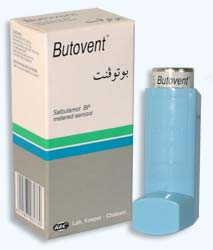Medical Emergencies
Asthma
This page discusses asthma, a fairly common condition, and one that can usually be readily managed by a prepared dental team should a patient have an attack at the dental surgery.

I understand. Do not show this message again.
The video provides essential guidance on how to recognise and manage an asthma attack. It begins by explaining that during an asthma attack, the muscles in the air passages of the lungs can go into spasm, which narrows the airways and makes breathing difficult. Common triggers for an asthma attack include allergies, colds, and smoke; however, some attacks can occur without any obvious trigger.
To identify if someone is experiencing an asthma attack, the video lists five key signs to look for: difficulty breathing or speaking, wheezing, frequent coughing, signs of distress or anxiety, and a grey-blue tinge to the lips, earlobes, or nail beds. For many individuals with asthma, their reliever inhaler, typically marked with a blue cap, is very important for self-management at the first sign of an attack.
The video emphasises the importance of staying calm and reassuring the affected person. It advises helping them to use their reliever inhaler immediately and to use a spacer if available. Additionally, it encourages the individual to breathe slowly and deeply while sitting in a comfortable position. If the situation does not improve within a few minutes, or if the attack worsens, the video outlines the steps to take, including taking one to two puffs of the inhaler every two minutes until a total of ten puffs has been reached.
In cases where it may be the person's first asthma attack, the attack is severe, or there is a noticeable decline in their condition, viewers are advised to call for emergency assistance by dialling 999/112. Continuous monitoring of the person's breathing, pulse, and response level is also covered. If the individual becomes unresponsive, specific first aid measures should be implemented.
In summary, the video underlines the critical actions to take during an asthma attack: reassure the person, assist them in using their inhaler, call for emergency help if the attack is severe, and keep monitoring their condition closely.
Using a large volume spacer
I understand. Do not show this message again.
The video provides a helpful guide on how to use spacers with metered dose inhalers, specifically focusing on two types: the small volume spacer and the large volume spacer. It emphasises the importance of ensuring that both the inhaler and spacer are clean and free from dirt or dust before use.
To demonstrate the use of the small spacer, the presenter advises users to first remove the cap from the inhaler and shake it four to five times. The inhaler is then inserted into the spacer, which is placed in the user’s mouth. As they begin to inhale, they should press the inhaler and take a deep breath in, holding it for a count of ten before exhaling.
When using the large volume spacer, the video instructs viewers to connect the two halves of the spacer properly by aligning the notches. After ensuring the device is ready, the presenter describes a method called "shake, rattle and roll," which involves shaking the inhaler and lightly rattling the spacer to make sure the valve is functioning correctly. Once assembled, the inhaler is again inserted into the spacer, and the user is advised to press the inhaler once and breathe in and out normally for about four to five breaths.
The video concludes by reminding viewers to refer to the manufacturer's instructions for cleaning and maintaining their spacer device, ensuring optimal performance. This information is very important for individuals who may have difficulty using their inhalers effectively.
If you prefer to view this page as didactic information, rather than as a self assessment, click the arrow below.
Didactic Information:
Click here
Asthma is a condition where the airways (bronchi) of the lungs are (reversibly) narrowed during an attack (or “acute exacerbation”). During an attack, the muscle cells in the bronchi constrict, with the airways becoming swollen and inflamed.
In between exacerbations, the patient may show few (if any) symptoms.
Signs & Symptoms
There is great variation in symptoms, from occasional mild attacks (brought on by a trigger) to severe cases where breathing is chronically obstructed.
Symptoms include shortness of breath, tight chest, and wheezing when breathing out. Sometimes there is repeated coughing. The neck muscles may become visible as the patient struggles to breathe.
If the attack is very severe, the patient may turn blue, or even lose consciousness.
Precautions
If the patient is known to have asthma, ensure they bring their medication with them to the surgery.
Judge the severity of their asthma: if (in the last year) they have needed oral medications as well as inhalers, and / or use a nebuliser at home, they are high risk. Similarly if they have been admitted to hospital for the condition.
Ensure the emergency drug kit contains Salbutamol aerosol inhaler (100 micrograms / actuation).
Ensure that emergency oxygen is available.
Management
Most attacks will respond quickly to a few doses of the patient’s own inhaler (e.g. Salbutamol).
If there is not a rapid response, or there are signs of a severe attack, call an ambulance urgently. For severe cases, give oxygen (15 litres / minute). Repeat doses (4 to 6 activations) of the Salbutamol inhaler should be given every ten minutes while waiting for the ambulance, preferably through a large volume spacer device.
The UK Resuscitation Council recommends that every dental practice should have a large volume spacer device as part of its emergency kit.
Self Assessment
What happens to the lungs during an asthma attack?
Does a patient with asthma show symptoms in between exacerbations?
The signs and symptoms of an asthma attack can be variable. List them.
What precautions should you take if you know a patient has asthma?
How would you manage an acute asthma exacerbation (attack)?

